Layne C. Price
Activity Classification Using Unsupervised Domain Transfer from Body Worn Sensors
Apr 20, 2023



Abstract:Activity classification has become a vital feature of wearable health tracking devices. As innovation in this field grows, wearable devices worn on different parts of the body are emerging. To perform activity classification on a new body location, labeled data corresponding to the new locations are generally required, but this is expensive to acquire. In this work, we present an innovative method to leverage an existing activity classifier, trained on Inertial Measurement Unit (IMU) data from a reference body location (the source domain), in order to perform activity classification on a new body location (the target domain) in an unsupervised way, i.e. without the need for classification labels at the new location. Specifically, given an IMU embedding model trained to perform activity classification at the source domain, we train an embedding model to perform activity classification at the target domain by replicating the embeddings at the source domain. This is achieved using simultaneous IMU measurements at the source and target domains. The replicated embeddings at the target domain are used by a classification model that has previously been trained on the source domain to perform activity classification at the target domain. We have evaluated the proposed methods on three activity classification datasets PAMAP2, MHealth, and Opportunity, yielding high F1 scores of 67.19%, 70.40% and 68.34%, respectively when the source domain is the wrist and the target domain is the torso.
Predicting Cellular Responses with Variational Causal Inference and Refined Relational Information
Sep 30, 2022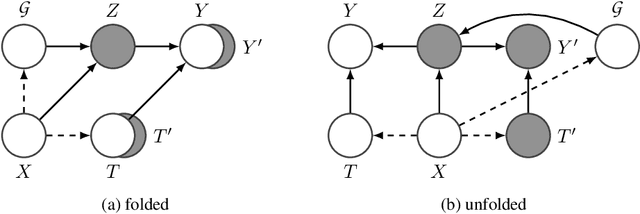

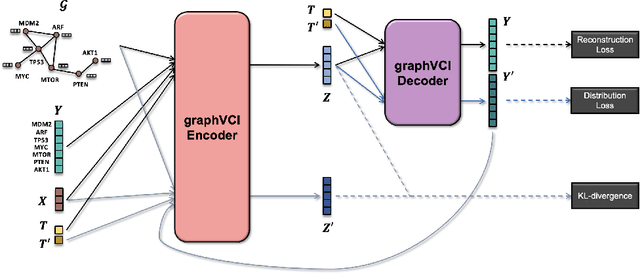

Abstract:Predicting the responses of a cell under perturbations may bring important benefits to drug discovery and personalized therapeutics. In this work, we propose a novel graph variational Bayesian causal inference framework to predict a cell's gene expressions under counterfactual perturbations (perturbations that this cell did not factually receive), leveraging information representing biological knowledge in the form of gene regulatory networks (GRNs) to aid individualized cellular response predictions. Aiming at a data-adaptive GRN, we also developed an adjacency matrix updating technique for graph convolutional networks and used it to refine GRNs during pre-training, which generated more insights on gene relations and enhanced model performance. Additionally, we propose a robust estimator within our framework for the asymptotically efficient estimation of marginal perturbation effect, which is yet to be carried out in previous works. With extensive experiments, we exhibited the advantage of our approach over state-of-the-art deep learning models for individual response prediction.
Variational Causal Inference
Sep 13, 2022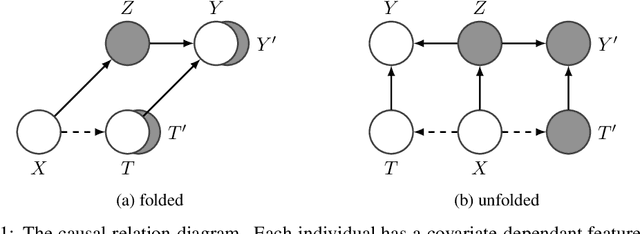
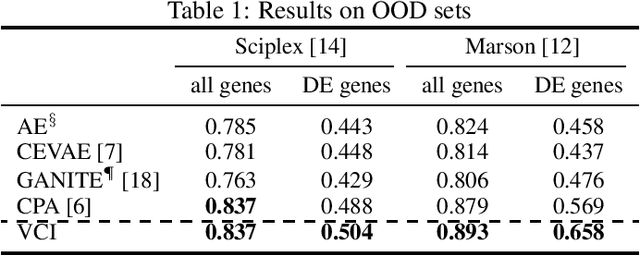


Abstract:Estimating an individual's potential outcomes under counterfactual treatments is a challenging task for traditional causal inference and supervised learning approaches when the outcome is high-dimensional (e.g. gene expressions, impulse responses, human faces) and covariates are relatively limited. In this case, to construct one's outcome under a counterfactual treatment, it is crucial to leverage individual information contained in its observed factual outcome on top of the covariates. We propose a deep variational Bayesian framework that rigorously integrates two main sources of information for outcome construction under a counterfactual treatment: one source is the individual features embedded in the high-dimensional factual outcome; the other source is the response distribution of similar subjects (subjects with the same covariates) that factually received this treatment of interest.
Robust posterior inference when statistically emulating forward simulations
Apr 24, 2020

Abstract:Scientific analyses often rely on slow, but accurate forward models for observable data conditioned on known model parameters. While various emulation schemes exist to approximate these slow calculations, these approaches are only safe if the approximations are well understood and controlled. This workshop submission reviews and updates a previously published method, which has been used in cosmological simulations, to (1) train an emulator while simultaneously estimating posterior probabilities with MCMC and (2) explicitly propagate the emulation error into errors on the posterior probabilities for model parameters. We demonstrate how these techniques can be applied to quickly estimate posterior distributions for parameters of the $\Lambda$CDM cosmology model, while also gauging the robustness of the emulator approximation.
Discovering Invariances in Healthcare Neural Networks
Nov 08, 2019


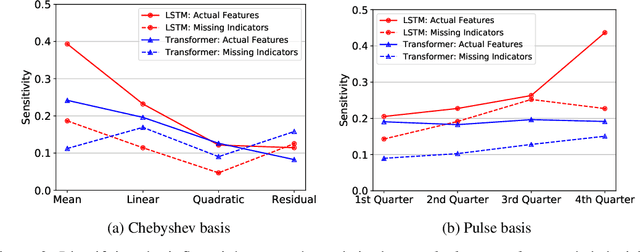
Abstract:We study the invariance characteristics of pre-trained predictive models by empirically learning transformations on the input that leave the prediction function approximately unchanged. To learn invariance transformations, we minimize the Wasserstein distance between the predictive distribution conditioned on the data instances and the predictive distribution conditioned on the transformed data instances. To avoid finding degenerate or perturbative transformations, we further regularize by adding a similarity term between the data and its transformed values. Applying the proposed technique to clinical time series data, we discover variables that commonly-used LSTM models do not rely on for their prediction, especially when the LSTM is trained to be adversarially robust.
Estimating Cosmological Parameters from the Dark Matter Distribution
Nov 06, 2017


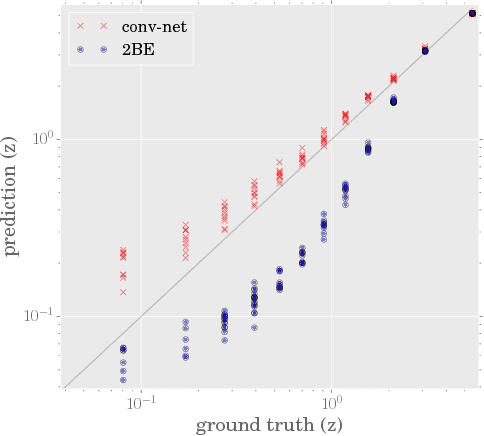
Abstract:A grand challenge of the 21st century cosmology is to accurately estimate the cosmological parameters of our Universe. A major approach to estimating the cosmological parameters is to use the large-scale matter distribution of the Universe. Galaxy surveys provide the means to map out cosmic large-scale structure in three dimensions. Information about galaxy locations is typically summarized in a "single" function of scale, such as the galaxy correlation function or power-spectrum. We show that it is possible to estimate these cosmological parameters directly from the distribution of matter. This paper presents the application of deep 3D convolutional networks to volumetric representation of dark-matter simulations as well as the results obtained using a recently proposed distribution regression framework, showing that machine learning techniques are comparable to, and can sometimes outperform, maximum-likelihood point estimates using "cosmological models". This opens the way to estimating the parameters of our Universe with higher accuracy.
 Add to Chrome
Add to Chrome Add to Firefox
Add to Firefox Add to Edge
Add to Edge